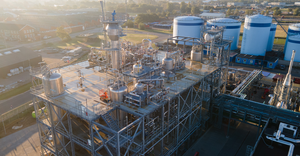A new machine learning program developed by University College London is having a high rate of success when it comes to sorting plastics for recycling.
March 15, 2023

Studies show that just about 5 percent of all plastic that people want to recycle make it through the process and is renewed. Big factors for this low number can be attributed contaminated materials, water requirements, and discarded waste along with that drastic 263 percent increase in American’s plastic waste use since 1980.
A new machine learning model has been developed by a team at University College London that is able to isolate compostable and biodegradable plastics and help to improve recycling efficiency and accuracy.
Using data based on a classification system using hyperspectral imaging, a machine learning program has been able to observe and sort individual pieces of plastic waste.
Depending on the size of the material, the program has been able to achieve perfect accuracy in sorting. Plastic materials larger than 10mm by 10mm were sorted with 100 percent accuracy, while smaller material rates were less than perfect.
You May Also Like


